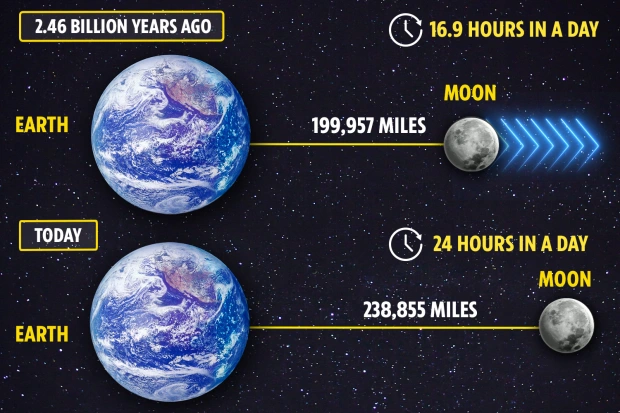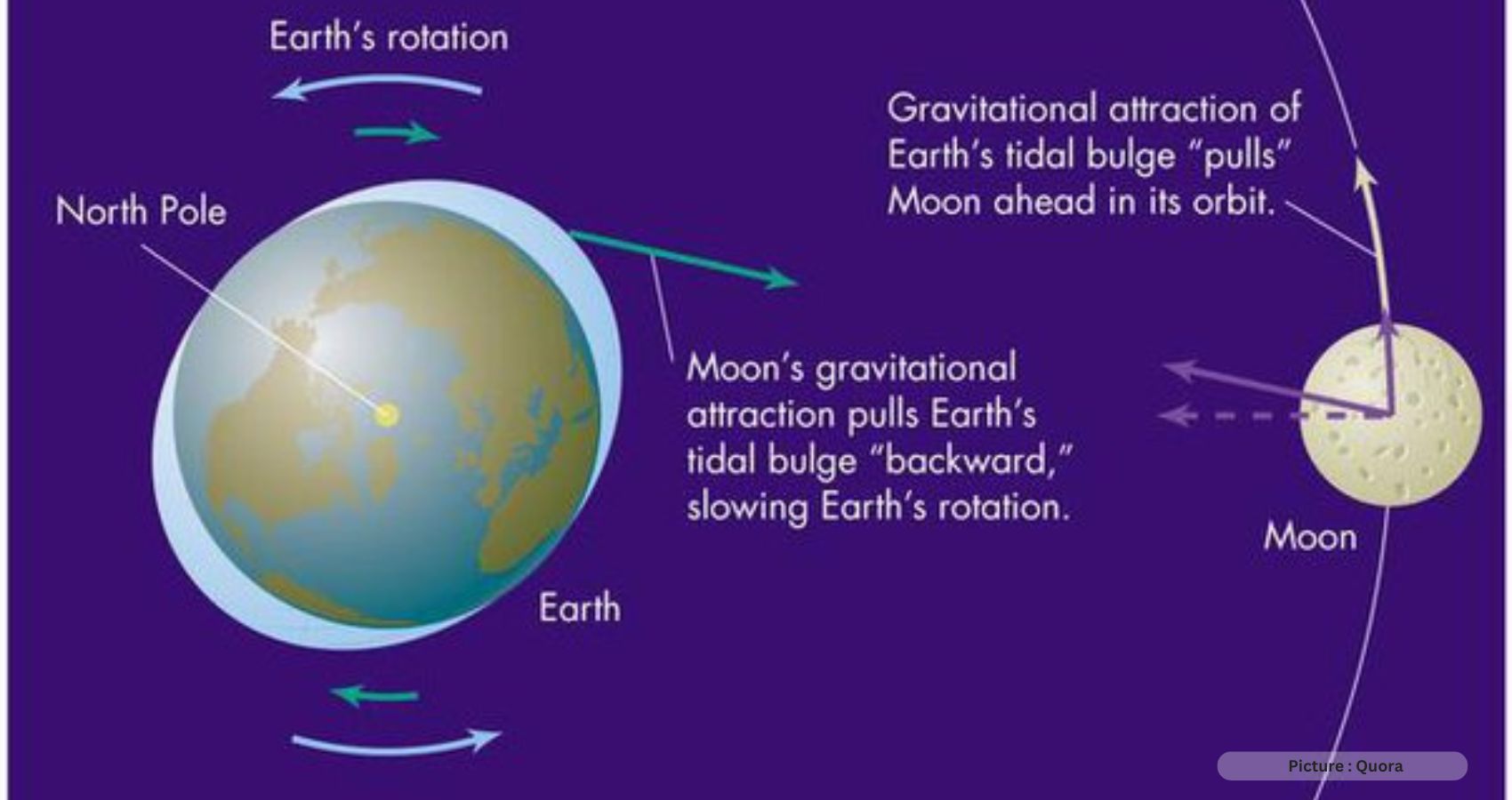In a revelation that challenges our understanding of Earth’s relationship with its celestial companion, the Moon, scientists have determined that our lunar neighbor is gradually moving away from Earth, leading to a subtle yet significant transformation in the length of our planet’s days.
This remarkable discovery sheds light on a phenomenon that unfolds over millions of years, offering a glimpse into the complex dynamics between Earth and its only natural satellite.

A recent investigation conducted by researchers at the University of Wisconsin-Madison delves into the geological history of our planet, focusing on rock formations dating back a staggering 90 million years. This exploration of Earth’s ancient interactions with the Moon, approximately 1.4 billion years ago, has unveiled the astonishing fact that the Moon is steadily distancing itself from Earth, an ongoing process occurring at a rate of 3.82 centimeters per year. The consequences of this gradual lunar retreat will become increasingly apparent in the distant future, as Earth’s days are poised to extend to 25 hours in the span of 200 million years.
Professor Stephen Meyers, a prominent figure in the field of geoscience at the University of Wisconsin-Madison, likens this phenomenon to a figure skater slowing down as they extend their arms during a spin.
He elucidates, “As the moon moves away, the Earth is like a spinning figure skater who slows down as they stretch their arms out.”
This analogy vividly illustrates the intricate interplay between Earth and the Moon, a dynamic that has captivated scientists seeking to comprehend the distant past while simultaneously expanding our grasp of geological time scales.
This revelation, however, is not the sole development challenging our perception of the Moon. Recent breakthroughs stemming from China’s space program have unearthed a treasure trove of secrets hidden beneath the lunar surface, spanning billions of years.
These concealed structures offer tantalizing glimpses into the Moon’s enigmatic history, providing invaluable insights for researchers endeavoring to reconstruct the lunar past.
The Moon’s slow and steady journey away from Earth, as unveiled by the meticulous study conducted by the University of Wisconsin-Madison, promises to reshape our understanding of our planet’s celestial partner. This ongoing celestial dance, which unfolds over geological epochs, will ultimately extend Earth’s days to 25 hours in the distant future.
Concurrently, China’s space program has unearthed lunar mysteries buried deep beneath the Moon’s surface, offering a fresh perspective on its intriguing past. Together, these revelations propel us into a realm where the Earth-Moon relationship is unveiled in all its complexity, providing a fascinating glimpse into the celestial mechanics that have shaped our planet and its only natural satellite.











